
 2021 JFK 50 Miler
2021 JFK 50 Miler
Focus Travel: Trans Atlantic - part 8
This is the final part of the Trans Atlantic series.
The final leg of our trans Atlantic crossing began when we entered the mouth of the Elbe River a short time after midnight. By 6:00 am the very slow moving ship was passing by Blankenese, the nice to look at western Hamburg outpost for the ridiculously rich. Shortly after that the city of Hamburg came into view, and by this time quite a few people were already gathered at various viewing areas, especially the observation deck. Entering the port on a vessel with a view like this is a experience to be savoured. The weather was fair, low hanging clouds which had shed some rain in the night were pushed away by the rising sun. Slowly all the familiar landmarks could be recognized one after the other: the Övelgönne museum harbour, the Dockland Office Building, the great container terminal, the Michel church tower, the TV tower, the town hall tower, the landing bridges, the huge dry docks and last but not least the crane framed construction nightmare (i.e.: Elb-Philharmonic). With the many details one sees on a slow moving ship, the list could go on and on. What had begun with a bright sun splashed party afternoon in New York, came to an end on a solemn hanseatic morning, and finally, slowly the realization emerged that this wonderful trip was over. Standing at the railing with this grand view, the past nine days went into retrospect.
What´s the essence of the voyage? A wonderful way of moving from one continent to the other, the best way of moving in terms of relocating ones life to a new location. No drowsiness, no jet lag, just a relaxed arrival and a preparedness for the new things to come.
From what I have learned on this and other sea voyages, is that the cruising and sea-liner industry still has to do a lot in order to improve working conditions for most of the crew. Just like air travel, sea travel increases greatly per annum. There are ways and means to find out which way of travelling suit your green or not so green attitude, your social or not so social behaviour while travelling, how big your carbon footprint is that you leave behind after every move from point A to point B, after every overnight stay etc. The one real big setback in sea travel is the fact that most ships move forward with mighty Diesel engines which are not so mightily high tech. Instead of developing better, cleaner Diesel technology (compare the development in the car industry and the progress in jet technology), most ships still use Heavy Fuel Oil, which is a big shame. Whereas many shipping companies are improving some other aspects like their water usage and trash avoidance technology, most of them don´t seem to have an interest in reinvesting their enormous gains into an up to date standard engine. There is a lot of homework to be done by all shipping companies, even the traditional complacent ones.
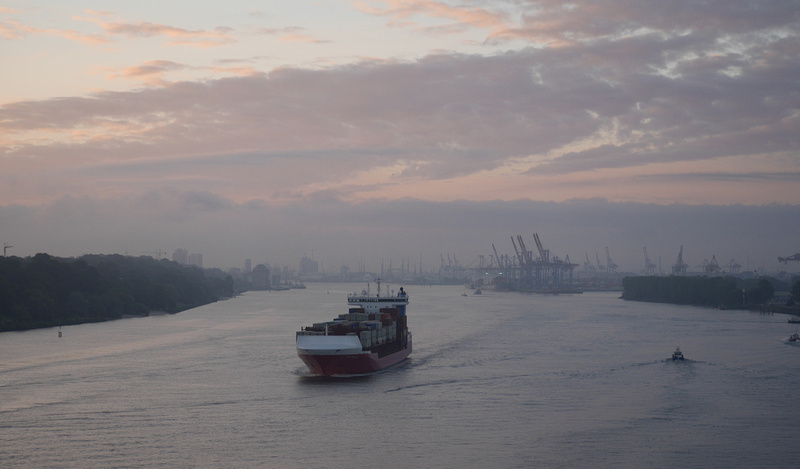

Early morning arrival in the great hanseatic port city of Hamburg.
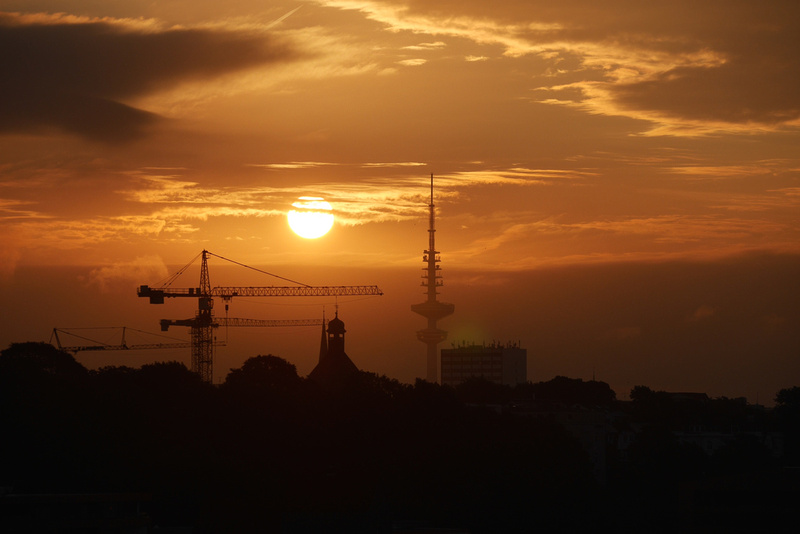

Sun is rising, clouds are moving. TV tower (Heinrich-Hertz-Turm) in background.


A tele-view of some of the dry docks and the Elb-Philharmonic.
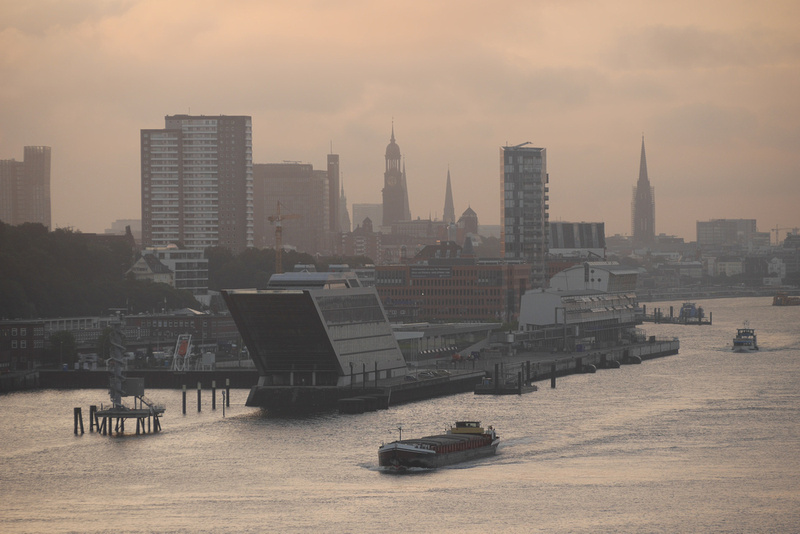

The very cool and striking Dockland Office Building at the former overseas pier.
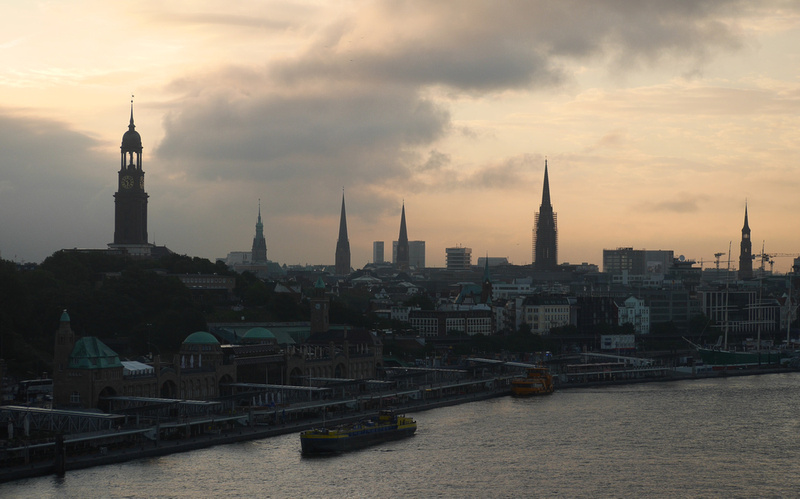

Still in early morning dawn, the more than 200 meter St. Pauli pier.
At left St. Michaelis church (Michel), a Hamburg landmark.
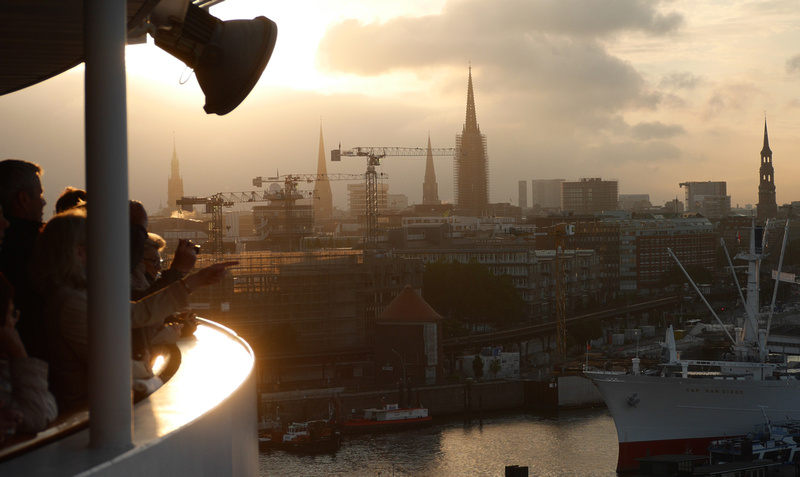

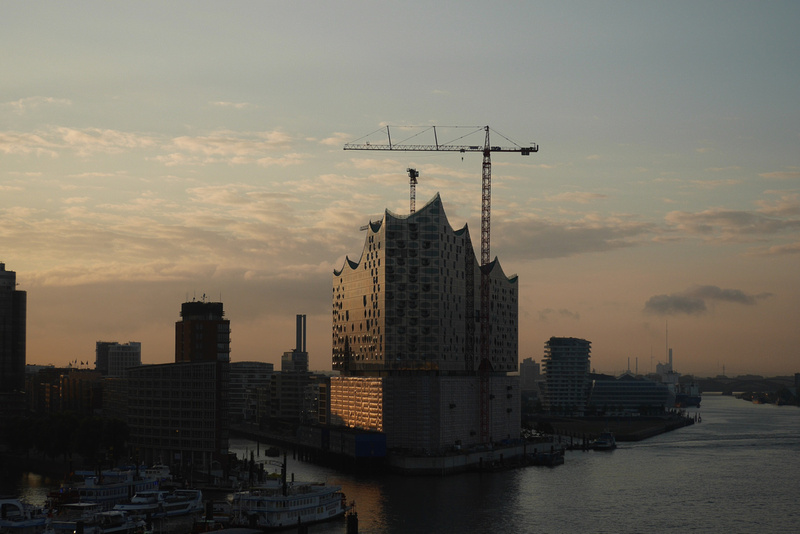

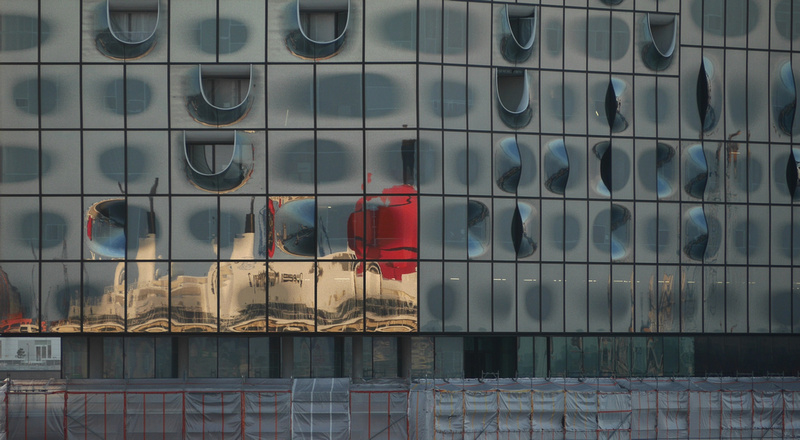

The great liner reflected in the Elb-Philharmonic. Each and every of the more than 2,000 windows has a
different pattern, in order to resemble a giant crystal from a distance, that reflects the
sky and the water differently at any time of day.


By the time the ship started its very slow 180º turn, the sky was sunny and clear.
A wonderful day in Hamburg had started.
If you want to read more of the Trans Atlantic series, type Trans Atlantic into the search field above.
See all pics of the Trans Atlantic series.
Comments
|
January
February
March
(5)
April (5)
(15)
May (15)
(6)
June (6)
(1)
July (1)
(4)
August (4)
(10)
September (10)
(12)
October (12)
(14)
November (14)
(12)
December (12)
|
(22)
January (22)
(14)
February (14)
(21)
March (21)
(11)
April (11)
(13)
May (13)
(14)
June (14)
(1)
July (1)
(2)
August (2)
(7)
September (7)
(15)
October (15)
(17)
November (17)
(18)
December (18)
|
(5)
January (5)
(14)
February (14)
(5)
March (5)
April
(5)
May (5)
(21)
June (21)
(13)
July (13)
(6)
August (6)
(11)
September (11)
(9)
October (9)
(10)
November (10)
December
|
January
February
March
April
May
(10)
June (10)
(15)
July (15)
(16)
August (16)
(4)
September (4)
(2)
October (2)
(8)
November (8)
(5)
December (5)
|
(6)
January (6)
February
(2)
March (2)
(7)
April (7)
(4)
May (4)
(5)
June (5)
(7)
July (7)
(2)
August (2)
September
October
(9)
November (9)
December
|
(1)
January (1)
(1)
February (1)
(7)
March (7)
(8)
April (8)
(3)
May (3)
June
July
August
September
(1)
October (1)
(14)
November (14)
(8)
December (8)
|
(8)
January (8)
(5)
February (5)
(9)
March (9)
(4)
April (4)
May
June
July
August
September
October
November
December
|
(4)
January (4)
(3)
February (3)
March
(1)
April (1)
(1)
May (1)
(2)
June (2)
July
(1)
August (1)
(2)
September (2)
October
November
(2)
December (2)
|
(5)
January (5)
February
(2)
March (2)
April
May
June
July
August
September
October
November
December
|
January
February
March
April
May
June
July
August
September
October
November
December
|
(3)
January (3)
(2)
February (2)
(1)
March (1)
(1)
April (1)
May
June
July
(3)
August (3)
September
October
November
December
|
January
February
March
April
May
June
July
August
September
October
November
December
|
January
February
March
April
May
June
July
August
September
October
November
December
|